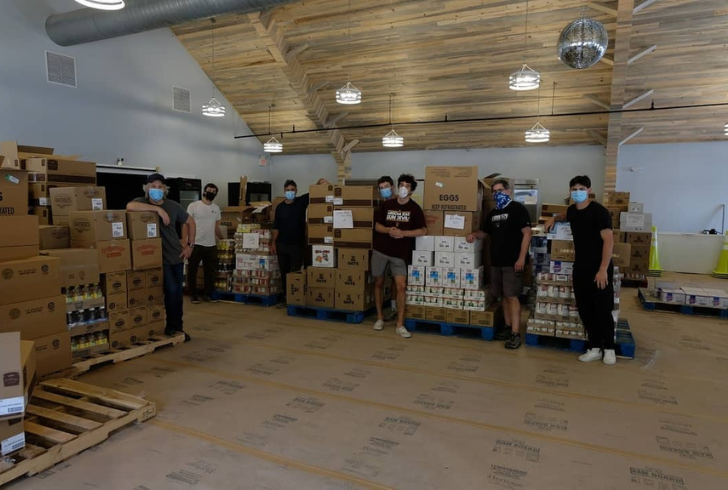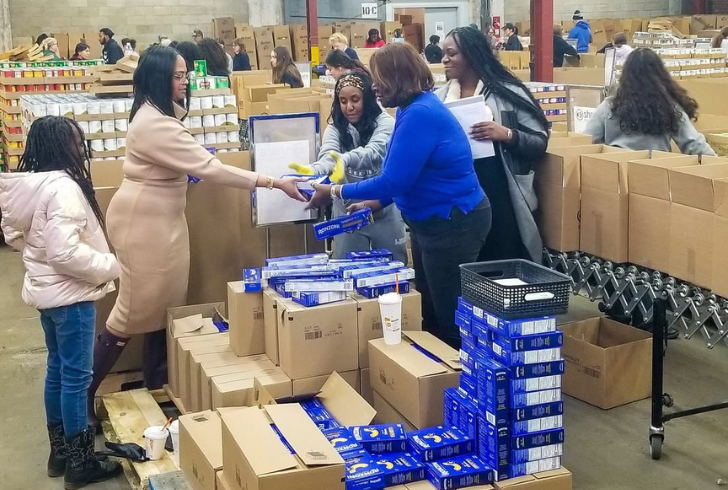The Dayton Food Bank is grappling with a significant loss in federal funding, which will likely alter the way food is distributed to thousands of families in the coming months. These cuts, totaling millions of dollars, are putting immense pressure on the organization to continue providing support despite a sharp reduction in resources.
While the need for food assistance remains unchanged, the road ahead for the Dayton Food Bank and its community partners is now uncertain.
A Sharp Cut in Support
The Dayton Food Bank has confirmed it is facing a funding reduction that will impact several essential food categories. These cuts will affect critical supplies such as meat, dairy, canned goods, and other vital staples that families depend on.
Among the most significant losses are:
- Approximately $2 million worth of meat, dairy products, and canned goods.
- Over $400,000 in locally grown produce that was expected to help supply fresh food.
- Nearly $20,000 in funding for the Dayton Food Bank’s summer food program, which serves children who rely on school meals.

Instagram | @jbjsoulkitchen | Dayton Food Bank's funding cut will limit meat, dairy, and staple supplies.
Additionally, at least 12 food orders were canceled between now and the end of June. This will further strain the regular supply chain that many families rely on each month.
The cuts are not happening in isolation. They are part of a larger, ongoing reduction in federal support, which has been felt across multiple community programs. Local leaders had feared this would happen, but hoped the impact wouldn’t be as severe.
What's Changing in the Food Supply?
As the Dayton Food Bank adjusts to these changes, families who regularly receive food assistance can expect some noticeable differences. While food will still be distributed, the variety may be more limited.
“You might not see as much chicken, and instead, we’ll have more pork or beef,” said Lee Alder, the Chief Development Officer at Dayton Food Bank. She reflected on the tough situation, comparing it to the early days of the pandemic when food deliveries were inconsistent, and the variety was significantly reduced.
The focus is now on ensuring that essential foods are still available, even if the selection is smaller. According to Alder, this reduction in variety could continue, depending on the level of support they are able to secure in the coming months.
Local Growers Could Play a Bigger Role
To help fill the gap, the Dayton Food Bank is once again turning to local farmers and produce growers. Similar partnerships were instrumental during the pandemic when the food bank distributed boxes filled with milk, fruits, vegetables, and protein. These boxes were packed with everyday food items that families could easily use.
“They were a lifeline back then,” Alder explained. “We had separate boxes for dairy, protein, and produce. These boxes helped us reach people quickly with the staples they needed.”
In the coming months, the Dayton Food Bank is hoping to strengthen these partnerships and rely on local growers more than ever. However, long-term plans remain uncertain, as the team is still determining the best way to stretch existing resources and keep food flowing to the people who need it most.
Relying on Community and Partnerships

Instagram | @sharefoodphilly | Food banks face funding cuts but grow stronger with community help.
With federal aid diminishing, the Dayton Food Bank is turning to the community, sister food banks, and local retailers for help. The goal is to ensure food distribution continues, even if the process looks different from before.
Both food and monetary donations are more crucial than ever. Additionally, volunteers are urgently needed, especially as the summer months approach, when the demand for food assistance typically increases. Families with school-aged children, in particular, rely heavily on food programs during the summer months when school meals are no longer available.
“Summer is always a tough time,” Alder shared. “When kids are out of school, families often struggle to provide all their meals. That’s when our summer food service really matters.”
How the Community Can Help
If you're wondering how to make a difference, there are several ways to support the Dayton Food Bank:
1. Donate Money – Every dollar helps the food bank stretch its resources.
2. Give Food – Canned goods, shelf-stable items, and fresh produce are always needed.
3. Volunteer Time – Volunteers are essential for sorting, packing, and delivering food.
The next few months will be challenging, but with the community’s help, the Dayton Food Bank hopes to continue serving the thousands of families who rely on its assistance.
Local Support Matters More Than Ever
As the impact of these cuts becomes clearer, one thing is certain: food assistance services will look different in the near future. Fewer options, tighter resources, and a greater reliance on local generosity are becoming the new reality. However, the Dayton Food Bank is committed to doing everything it can to prevent service gaps and continue to fight hunger in the community.
This situation also highlights how essential strong local partnerships and community support are when federal resources fall short. Now, the hope is that enough people will step up to help meet this critical need.

